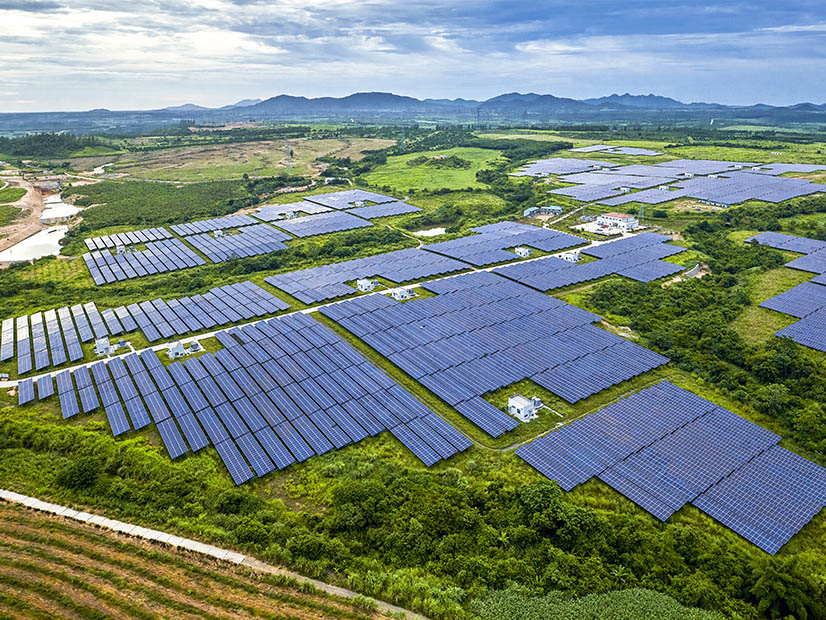Companies committed to 100% clean energy should look beyond the megawatts of solar, wind, storage or other carbon-free power they are procuring, according to a new report from the World Resources Institute.
They should also consider how, where and when those megawatts are being produced and consumed, and their impact on carbon emissions and on distribution and transmission grids.
The report calls for “transformative procurement,” which it defines as strategies and practices that “maximize emission reductions, match [companies’] clean energy purchases more closely to their loads, increase the flexibility of the grid, deploy technologies that enable decarbonization and ensure a just transition to zero-carbon resources.”
In particular, the report targets “large energy buyers,” which it says are “well-positioned to accelerate deep decarbonization because of the magnitude of their energy demand; their staff and resources dedicated to clean energy procurement; and their ability to integrate new technologies, innovate and control their energy usage.”
“Large energy buyers, both companies and cities, have been playing a very important role in driving clean energy on the grid, and we need that to continue,” Lori Bird, WRI’s director for U.S. energy, told NetZero Insider. “[But] as you get more clean energy on the grid, it needs to operate in a different way, and the role of customers and their interactivity with the marketplace is really important.”
A key case study cited in the report is Google’s 24/7 contract with AES, announced in May, guaranteeing the tech giant’s Virginia data centers will receive 90% carbon-free power on an hourly basis. AES is procuring a 500-MW portfolio of wind, solar, hydropower and battery storage for the 10-year contract, according to the report.
Google has also piloted a “carbon-intelligent computing platform” that allows it to load-shift demand at individual data centers, for example, rescheduling nonurgent computing tasks to times when renewable wind or solar are available.
Other modes of transformative procurement that companies can adopt include ensuring their purchases do not create grid congestion or overgeneration that might impede broader deployment of clean energy, and actively driving innovation in new technologies and business models, the report says.
Microsoft Goes Big on Carbon Capture
The impact that large energy buyers can have on energy market growth and innovation is well recognized. In the past decade, corporate procurement has put 35 GW of utility-scale wind and solar on the U.S. grid, out of a total of 130 GW of new renewables, the report says. Industry analyst Wood Mackenzie anticipates U.S. companies will put 85 GW of new renewables on the grid by 2030, but many reports say that in the face of the mounting climate crisis, clean energy deployment must accelerate, along with storage, flexible demand and grid expansion, and modernization.
The report “is trying to emphasize the importance of this next decade and the transition that’s needed and how we might need to think about that differently and take some different actions and enable these customers that really want to drive clean energy to take it to that next level,” Bird said.
For example, the report notes, distribution and transmission grids can only handle finite amounts of intermittent renewables at one time — what the report calls their “clean energy carrying capacity.” Solar or wind overgeneration may result in curtailment, which in turn “can make it harder for future projects to come online,” the report says. Options for large energy buyers to avoid straining the grid’s clean energy carrying capacity include:
- Firm clean energy technologies: Achieving 24/7 clean energy targets will likely require “firm,” dispatchable clean energy, such as hydropower, nuclear, biomass and even fossil fuel generation with carbon capture. The report notes that developing these firm clean energy resources could require different contract structures based on capacity rather than delivered energy, and the willingness to invest in pilot projects and emerging technologies.
- Decarbonization-enabling technologies: The report’s focus here is on energy storage and carbon capture. Batteries co-located with clean generation can provide reliability — and soak up excess generation — as well as delivering grid-support services that can be bid into regional markets. Carbon capture can be deployed to “offset emissions that cannot be avoided,” the report says.
Another case study in the report briefly profiles Microsoft’s commitment to invest $1 billion in carbon capture technologies as part of its pledge to become carbon-negative by 2030. The company is working with Northern Lights Carbon Capture and Storage to create open-source software platforms that will be needed to scale carbon capture.
The wide choice of options for large buyers to consider is deliberate, Bird said. “Not everyone can do the same thing, and not all markets actually need the same types of actions because the generation mix is different in different parts of the country and buyers have different load profiles or abilities to purchase different kinds of energy.”
Regulatory barriers can also mean not all options are available in different regions, depending on market structures — regulated, restructured, wholesale or not, she said. “Some companies are more constrained than others in terms of how many resources they have available to do this and the ability to do complex things,” she said.
Case studies in the report focus primarily on the efforts of tech giants like Google and Microsoft, Bird said. The way forward includes developing and scaling the clean energy products and programs that will make “transformative” procurement the industry standard, accessible to a broad range of businesses, utilities and other customers.
Creating new metrics for evaluating impact and greenhouse gas accounting will also be required, which in turn will depend on the ability to obtain accurate, standardized data, the report says. Granular data on the portion of customer load served by clean energy could make it possible to measure “how closely the timing of purchased clean energy meets customer load on a daily and hourly basis.”


